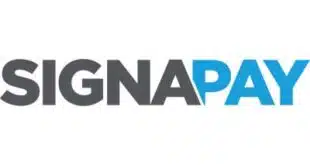Adding to the tab to account for payment card costs is just plain dumb. Here are the reasons why.
Now that recent court and legislative decisions have cleared the way, many merchants and merchant-service providers are considering surcharging to recover credit card acceptance costs. If you are one of them, you should think twice. Here are the two main reasons why:
- The pro-surcharging financial arguments are bogus
You’re on vacation with your family and dining in a spectacular beach restaurant. As you scan the menu, you estimate it’s going to cost about $80 per person. “No problem,” you think, until you spot a note at the bottom of the menu that says, “Sorry, no credit cards.” How much smaller did the menu just get? Did your vacation feast just become appetizers to share? For many, the answer is “yes.”
Now that cards are accepted almost everywhere, many consumers carry little cash, so attempting to steer transactions to cash will almost definitely reduce sales. Even if the consumer is carrying sufficient cash, the impacts of cash steering can be dire for merchants.
Let’s say you’re now home from vacation and back at work at a retail store where you are responsible for cash management. Every morning, and for every checkout lane, you make sure that the cash drawers are stocked so cashiers can make change as needed.
As cash transactions are completed, you continuously re-stock smaller bills and coins in each drawer and remove larger bills and excess balances to the safe. At the end of the day, you produce an accounting report for each drawer (starting cash balance, total cash in, total cash out, ending balance). You inventory denominations-on-hand to make sure you can re-stock the drawers tomorrow.
Then, under heavy security, you oversee the removal of cash from the safe into an armored truck, which delivers excess cash to the bank and returns smaller denominations to re-stock the drawers. Last year, you had three incidents of attempted armed robbery, leading to the resignations of six employees and higher insurance costs. Your recruiting and training costs run about $15,000 per employee.
After all that, do you still think that cash transactions are cheaper than credit or debit transactions? When you consider both opportunity costs and direct expenses, the cost of cash is often as high as or higher than credit.
Sophisticated merchants know this. You’ll see them arguing the contrary when it helps them negotiate with or sue payment networks, but in most cases the arguments are ridiculous. Don’t confuse legal or negotiation posturing with reality.
- Surcharging rarely makes business sense
Here are a couple of circumstances where, even if surcharging made financial sense, it would not make business sense:
- When the merchant has competition
- When the merchant does not have competition
Competitive pressures equalize total cost whether it is made up of a base price plus a surcharge or a single, bundled price. Additionally, consider Oglesby’s universal pricing law:
Buyers enjoy paying for valuable things, but they abhor paying for things that are not valuable.
How many buyers will enjoy paying a fee? None, that’s how many. Merchants are better off with a single, bundled price that meets or beats competitive pricing.
In non-competitive markets, such as a truly unique restaurant, professional services, a venue with exclusive events, or any other situation where the product is unique and valuable, it may be feasible to surcharge without complaint from consumers. If they want something they can’t get elsewhere, they will pay.
But should they? No. In non-competitive markets, merchants optimize prices to demand. Breaking the price into a base plus a surcharge doesn’t create a magic loophole enabling a higher total price. It denigrates the buyer’s experience. Merchants that can raise prices without impacting demand are better off just raising the base price.
So when does surcharging make sense? It can make sense when the following circumstances apply: the buyer is captive; the risk of damaging the seller-to-buyer relationship is low; the merchant can’t raise the base price.
Here are four examples:
- Regulated monopolies: Government entities collecting taxes or utility companies collecting for critical services, such as electricity or water, have captive buyers, but pricing is regulated. The risk of damaging the seller-to-buyer experience is low because there are no alternative providers.
- Landlords collecting rent: Landlords and tenants agree to long-term leases that lock in pricing and duration, so the buyer is captive. The costs of switching to alternatives is high for both, so the risk of damaging relationships is low. The base price is locked in by the lease.
- Taxis: Once consumers enter taxicabs, they are unlikely to get out until arriving at their destination. Fares are one-time-only, so risk to the seller-to-buyer relationship is low. Pricing is regulated.
- Ticket vendors: The buyer is captive to the event and venue he or she wishes to attend. The vendor is a third party with no ability to change the base price and a very limited relationship with the buyer.
In the rare instances where these circumstances apply, surcharging can make sense. Otherwise, don’t waste your time.
—Rick Oglesby is principal at AZ Payments Group, a Mesa, Ariz.-based consultancy.




